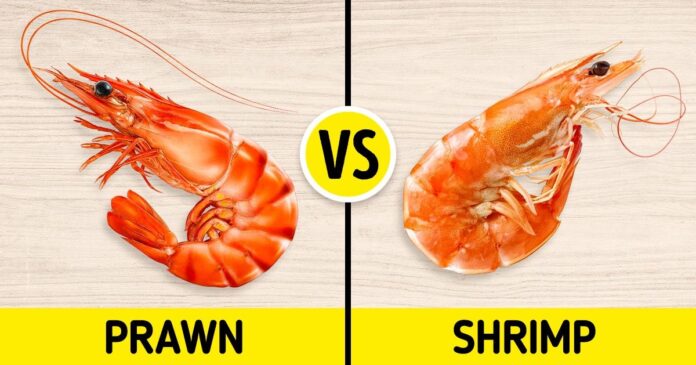Here are some examples of everyday foods that are similar, but have very different nutrition profiles. When you’re shopping at the grocery store, consider reading labels and choosing healthier alternatives.
Whole eggs vs egg whites
whole eggs typically contain about 6 grams of protein each, while egg whites only have 3 grams per serving. However, egg whites are lower in fat and calories than whole eggs. They also give you a nice dose of vitamin B12 and potassium.
Tuna vs salmon
Both fish options pack a healthy punch of protein and omega-3 fatty acids to help keep your heart strong. Some varieties of canned tuna can be high in mercury levels, so it’s important to consult the label before purchasing.
Graham crackers vs rice cakes:
graham crackers usually contain more salt than rice cakes–that’s apple cinnamon graham crackers for you! Rice cakes tend to also be lower in carbohydrates than their sweet snack counterparts.
Brown Rice vs. White Rice
In summary, brown rice is the more health-conscious choice because it contains more fiber and nutrients. However, if you prefer the taste of white rice or need to strictly limit your caloric intake, then occasional portions of white rice are OK. For people with diabetes, however, it’s best to choose foods that are lower on the glycemic index (brown rice) rather than higher (white rice).
Just make sure to use portion control with both types of rice so you don’t overeat calories. And for even better nutrition, look for labels that say “enriched” or “fortified,” which means that these essential vitamins and minerals were added back in after processing.
White Potato vs. Sweet Potato
In the battle over which spud is best for you, there’s no contest.
Sweet potatoes are much sweeter than white potatoes and have more dietary fiber, protein, vitamins and minerals. They’re also a better source of beta-carotene, that vitamin A precursor that gives carrots their orange color. Sweet potatoes are higher in sugar than white potatoes, but they’re often eaten with butter or other high-fat toppings that increase the calorie count. Baked sweet potatoes make a fantastic side dish by themselves or mashed along with a little brown sugar and cinnamon.
Almond Milk vs. Skim Milk
Choosing almond milk often means choosing a food that’s lactose-free, has fewer calories and no cholesterol. While skim milk has more protein and calcium, if you’re not concerned with these nutrients, the choice between skim and almond is clear. However, if your goal is to eat healthier or lose weight then the choice is a bit trickier because although almond milk has less calories than skim milk, the calories you do get from almond milk are from carbohydrates.
Depending on what your goals are for eating healthier or losing weight, choosing one over the other might make sense for you. Just remember to read nutrition labels carefully so that you can choose an option that best aligns with your goals.
Turkey Burgers vs. Beef Burgers
The average beef patty has 29g of fat, 119mg of cholesterol, and 76g of protein. Turkey patties have less fat than beef patties (19g) but also have less protein (26g). The average turkey patty has 80 mg more sodium than the average beef patty. Beef patties have more iron, selenium, vitamin B12 and zinc per portion than equivalent turkey burgers. Turkey burgers may be a good alternative if you are watching your cholesterol or saturated fats, but they don’t provide as much iron or B vitamins as beef burgers do.
Butter vs. Margarine
If you love the taste and texture of butter, it’s a good idea to have it in moderation and use margarine when you can. Margarine is made from vegetable oils, so it contains unsaturated “good” fats — polyunsaturated and monounsaturated fats. These types of fats help reduce bad cholesterol levels in your blood which can lower your risk of heart disease and stroke. They also provide nutrients to help develop and maintain your body’s cells.
Butter is made from animal fat, so it contains more saturated fat than margarine. Saturated fats raise cholesterol levels in the blood, which can increase your risk of heart disease over time. Butter also contains fewer vitamins A, D, E and K than margarine does; these are added to most brands of margarine during production.
The two spreads contain similar amounts of total fat but butter has significantly more saturated fat than margarine does – 11 grams per 100 grams compared with almost 5 grams per 100 grams for most types of margarine that have been fortified with plant sterols (or plant stanols).
Old-Fashioned Oats vs. Steel-Cut Oats
Steel-cut oats are made by chopping whole oat groats into two or three pieces. They are chewier and denser than regular rolled oats, which have been steamed and flattened, and take longer to prepare. Steel-cut oats contain a bit more protein than regular rolled oats, but less fat and sodium. This makes them high in fiber and good for stabilizing blood sugar levels. They can be used in anything from cookies to casseroles to breads, because the texture of steel cut oats is basically neutral. I prefer old fashioned rolled oats for my mornings, as they cook faster (about five minutes) and their consistency is soft enough that they’re easy on your stomach first thing out of bed.
Final thoughts on Similar Foods for Eating Healthier
To recap, here’s a quick guide to choosing between similar foods:
- Look at the labels. Choose the food with fewer ingredients, ideally without any artificial flavorings, colorings or preservatives
- For grains and cereals, choose those with more whole grains
- When it comes to dairy, choose unsweetened dairy products over sweetened ones and remember that fat-free does not always mean healthy.











